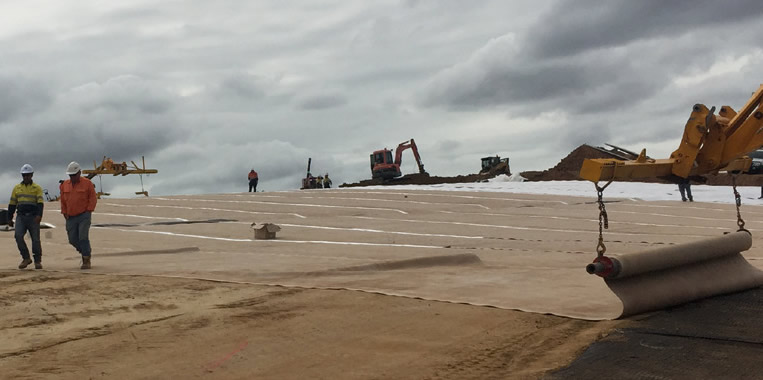Geosynthetic materials and mineral components are used as technical barriers for landfills. As a base seal, these engineered systems prevent polluted liquid seepage into groundwater. As a landfill cap, they prevent the infiltration of precipitation into the landfill while also preventing leachate from percolating out and polluting surface waters. The Ennigerloh landfill in Münsterland, Germany, exemplifies how these technical barriers succeed.
ENNIGERLOH’S TECHNICAL BARRIERS
The Ennigerloh site is operated by Abfallwirtschaftsgesellschaft des Kreises Warendorf mbH (AWG), which has continuously invested in the extension of the site’s technical barriers. These investments not only meet the historical base sealing requirements but minimize leachate generation, both for environmental and operational efficiency reasons.
Leachate can require complex treatment before it is considered clean enough for discharge. It can add considerable operational cost to landfills during active fill stages and in post-closure care.
RELATED: GCLs Save a Fish Ladder and a Historic Structure in Germany
In 2019, the landfill capping system for Ennigerloh’s Section IVa was expanded. The cap involved a surface area of 50,000 m², both on the flat top and on the slopes (1:3).
The use of geosynthetics as technical barriers in the sealing system proved to be the most economical alternative for the sealing design. Bentofix® NSP 4900 (LAGA) geosynthetic clay liner (GCL) was used as the mineral component of the system. A Carbofol® PEHD 2.5 MF/MF geomembrane was included to provide the system’s polymeric barrier.
Secudrain® RZ331 WDZ701 RZ201 drainage products were used above the sealing components to manage water in the soil cover layer. This prevented the harmful build up of precipitation in the soil cover, which could otherwise impose mechanical stress on the geomembrane or lead to cover soil weakness and erosion that would impair proper surface re-cultivation.
All of the geosynthetics used were approved for landfill use by the Federal Institute for Materials Research and Testing (BAM) in accordance with German waste regulations. The Bentofix® GCL also met the LAGA certificate of suitability requirement for the site. Bauberatung Geokunststoffe GmbH & Co. KG (BBG) handled the necessary verifications of the design (e.g., stability, protection effectiveness, drainage performance) and NAUE Sealing GmbH & Co. KG managed the installation.

For the customer on the project—the landfill operator—the availability of design verification, geosynthetic supply, and installation services from a single company offered a complete package of expertise from barrier system production through installation. It was an approach the Ennigerloh site had used before with NAUE.
“This continuity testifies to the appreciation of our customers for our comprehensive range of services in the field of environmental protection,” says Kai-Christian Ledel, Managing Director of NAUE Sealing GmbH & Co. KG.
This story comes from NAUE News 49. For more information on landfill engineering and geosynthetics in various civil works, visit www.naue.com.












